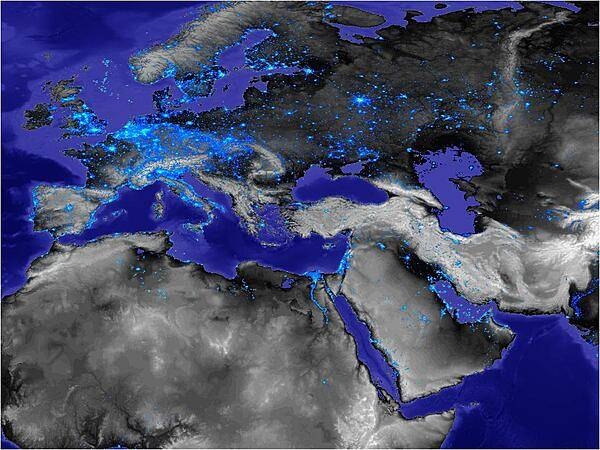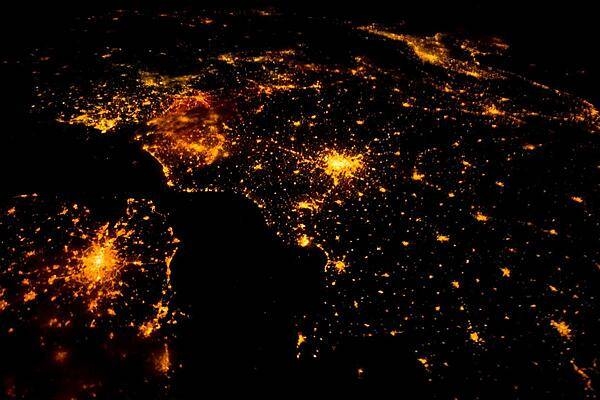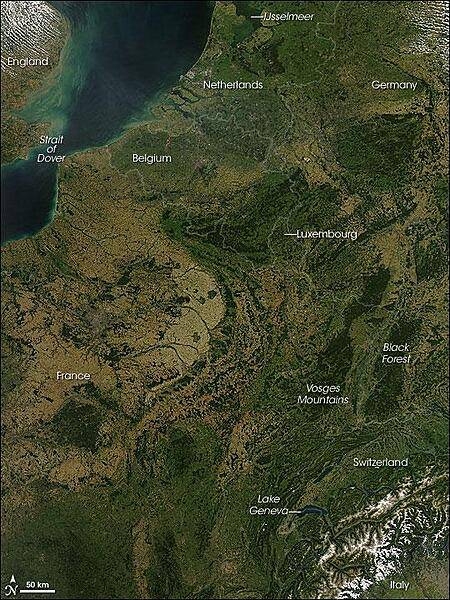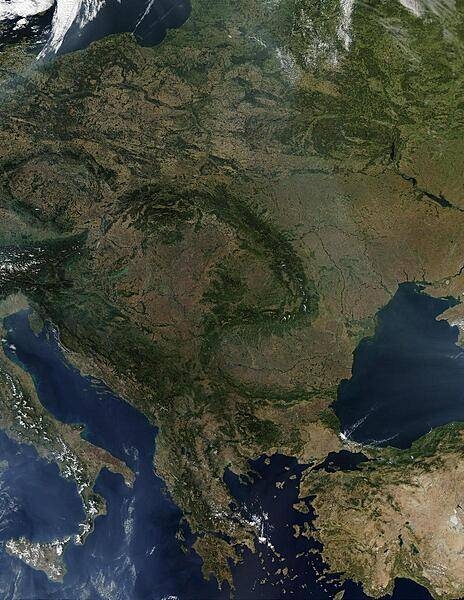European Union
Photos
5 Photos
Filter Categories
All
Filters
European "urban sprawl" is dramatically visualized in this nighttime image of city lights superimposed on terrain photography. Image courtesy of NASA GSFC Scientific Visualization Studio.

This fantasy image of Europe at night is a digital composite of archived satellite images taken both during the day and night. The view is different from what an astronaut would see for reasons including a complete lack of clouds and an unrealistic exaggeration of lights and contrasts. Even so, the geography underlying the image is captivating. Image courtesy of NASA.

Several of the oldest cities of northwestern Europe are highlighted in this astronaut photo of 10 August 2011. While the landscape is dotted with clusters of lights from individual urban areas, the metropolitan areas of London (lower left), Paris (center), Brussels, and Amsterdam (upper left) stand out due to their large light "footprints." The metropolitan area of Milan is also visible at image upper right. While each of these cities is, or has been, the capital of a kingdom, republic, or empire - Paris and London have been all three - Brussels is also the capital city of the European Union. To give a sense of scale, the centers of the London and Paris metropolitan areas are approximately 340 km (210 mi) from each other. The image is also oblique making the distance between Paris and Milan (640 km, or 400 mi) appear less than that of Paris to London. In contrast to the land surface defined by the city lights, the English Channel presents a uniform dark appearance. Similarly, the Alps near Milan are also largely devoid of lights. While much of the atmosphere was clear at the time the image was taken, the lights of Brussels are dimmed by thin cloud cover. Image courtesy of NASA.

A rare cloud-free view of a wide area of Western Europe. This Aqua satellite image was captured on 30 August 2008. Skies were clear from the Netherlands in the north to Italy in the south, revealing several of Europe's famous natural and man-made features. A few small fires (marked with red dots) were detected, as well.
A pair of geologically matching mountain ranges appear at the border of France and Germany, covered in dark green forests. France's Vosges and Germany's Black Forest rise on either side of the Rhine River Valley. The valley in that area is known to geologists as the Rhine Graben; a graben is an elongated block of Earth's crust that has sunk relative to surrounding blocks. To the south, the snow-covered Alps create an arcing boundary between Switzerland and Italy.
Near the bottom right of the image, one of the largest lakes in Europe, Lake Geneva (formally known as Lac Leman), fills a glacier-carved valley in western Switzerland. This natural lake occurs on the Rhone River, upstream of where it makes a sharp southward bend as it leaves the Alps. At the northern edge of the image is a larger, artificial lake: the Netherland's IJsselmeer. Despite its closeness to the North Sea, IJsselmeer is a freshwater lake. It was originally a saltwater inlet at the mouth of the IJssel River, but in the early 1930s, the Dutch built a dike across the inlet. The freshwater flow of the IJssel River flushed out the seawater, forming the new lake. Photo courtesy of NASA.

A virtually cloud-free view of Central Europe vividly displays the fishhook-shaped Carpathian Mountains that snake through the middle of the continent. Encompassed in this satellite view are all of Poland, the Czech Republic, Slovakia, Hungary, Romania, Slovenia, Greece, and all of the Balkan countries. Large parts of Lithuania, Belarus, Ukraine, Turkey, and Italy are also visible. Scattered fires are visible as red dots. Image courtesy of NASA.
